This is one of my regular cookery book reviews, which came about because of the number of questions I was getting about how to convert recipes from conventional cookbooks. So the main aim of these posts - as well as showcasing books I have genuinely enjoyed cooking from - is to show you just how compatible your cookbook collection is with pressure cooking. My policy is no negative reviews so you can take as a given that if I’m writing about it, I liked it. If I start cooking from a book and find I am not liking the recipes, I quietly discard it. I will not shout about it here. If you have a classic/favourite cookbook you would like me to take a look at, please let me know!
A little story for you. It is a Saturday just before Christmas, 2009. We are shopping on the King’s Road. I am 8 months pregnant and flagging. Shariq finds a coffee shop, and a free table, and buys me a coffee while he goes off to finish his shopping. Annoyingly I realise - most unusual for me - that I don’t have a book with me to read. I don’t yet have a smartphone or a Kindle. A few minutes later, an American couple ask if they can share my table. Of course I say yes. A few minutes later still, Shariq reappears. He has dived into a bookshop and bought me a book to read while I am waiting for him. It is called Great British Cheeses. The American couple look aghast. The woman leans over, pats my hand and asks, “Is your husband a sadist?” I am confused, and she explains. “Why else would he buy you a book about something you can’t currently eat?” I don’t disabuse her (I’m afraid I am eating all the cheese).
This was my first introduction to Jenny Linford, the author of the book, NOT the concerned American lady and I have since come to know her and her work well. She has had one of the most varied, multi-faceted and interesting careers in food writing I know of. I mentioned just the other day Repast, her collaboration with the British Museum, and she also wrote The Missing Ingredient - a fascinating and thoughtful book about the role of time in food. She is a champion of food producers and sellers, especially cheese makers, and has a podcast called A Slice of Cheese. I mention this partly because I have appeared on it a couple of times, talking, unsurprisingly, about cooking (and baking) with cheese. You can listen to those episodes here and here. But the whole series is worth a listen. She also writes excellent cookery books….
The Kew Gardens Salad Book is her second cookbook collaboration with the Royal Botanic Gardens at Kew. The first was The Kew Gardens Cookbook - a curation of recipes donated from many food writers and chefs, including me (a recipe from Leaf). It’s a very diverse collection of plant based recipes, well worth buying if you are keen to expand your vegetarian repertoire.
To talk about Kew for a moment - A purchase of any of their books will support the research and conservation for which they are renowned. Their mission statement says it all - it is “to understand and protect plants and fungi, for the wellbeing of people and the future of all life on earth.” I imagine few things are more important.

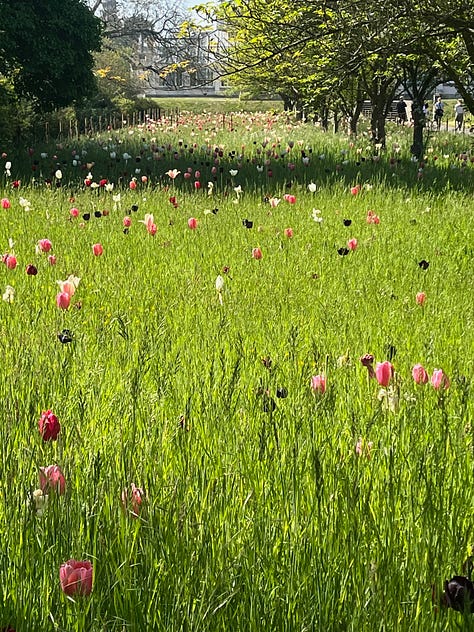
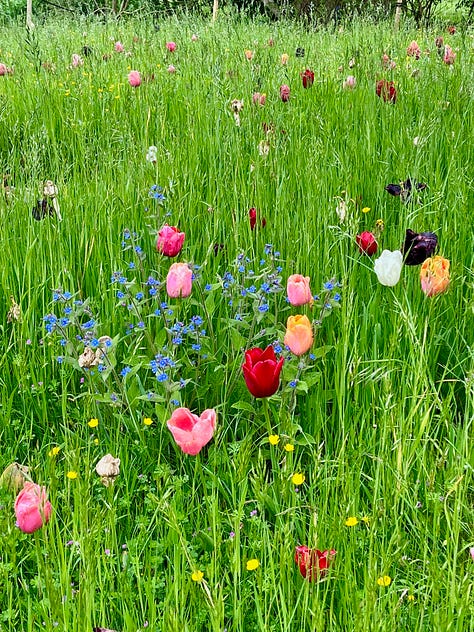
I have been a member of the gardens for close on two decades and it is a place I visit very regularly, multiple times a year. I find it endlessly fascinating and inspiring, but also just a very restful place to walk. There is beauty at every turn - not just in the obvious places, among the magnificent trees, or the tulip meadows I adore and look forward to every year, but everywhere else from the expanses of wilder areas filled with shaggy, overgrown hollies, wild garlic and native bluebells to the experimental and well manicured vegetable beds. And even after two decades of visiting, I always find something new. No other botanical garden comes close.


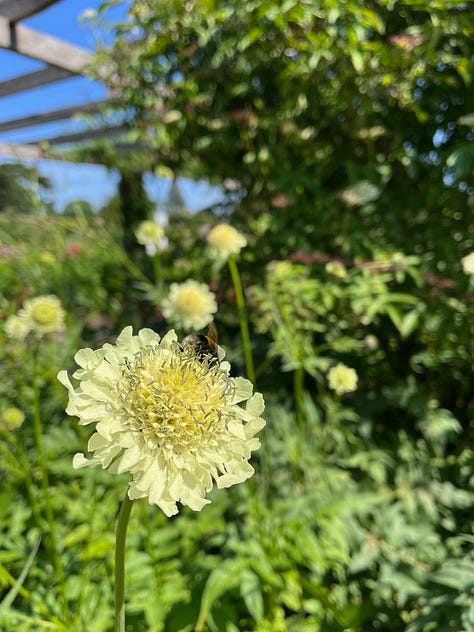
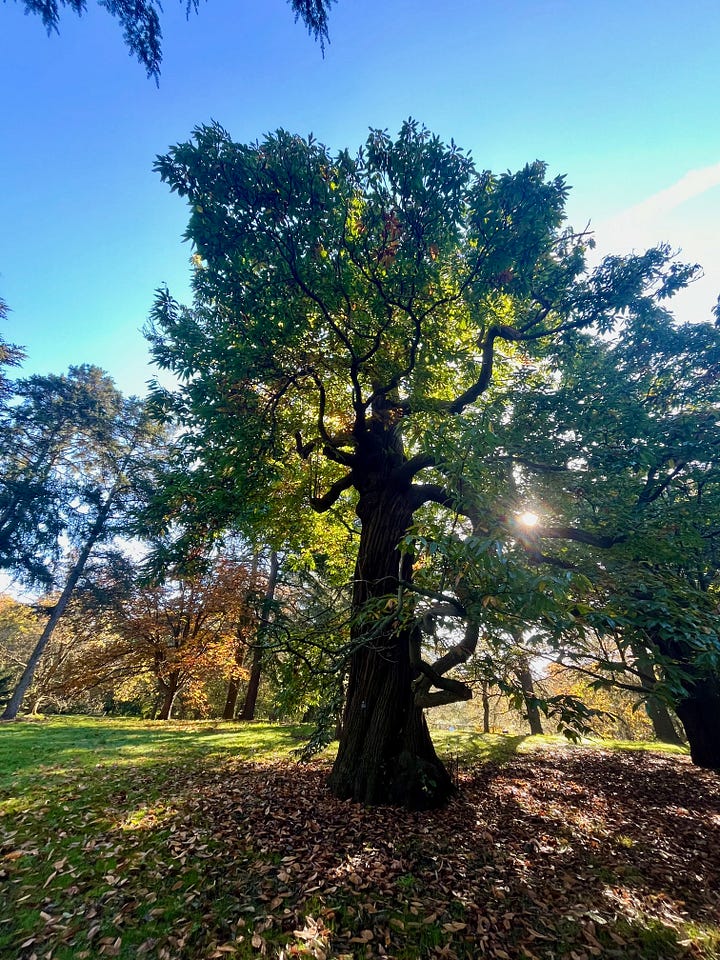
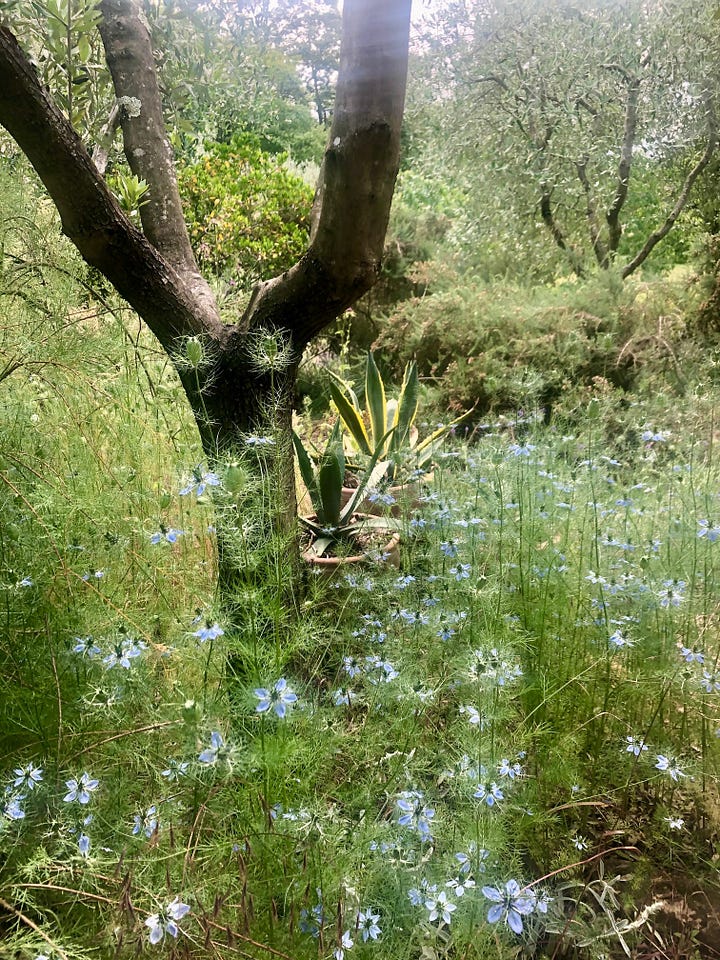


Now, back to food and pressure cooking and Jenny’s salad book. I’m sure some of you are thinking that a salad book is a strange one to include in a pressure cooking newsletter. But I promise you it makes sense - I’ve talked before about pressure cookers being really good at batch cooking building block ingredients. You know, all those cooked ingredients which are so useful to have in fridge and freezer and are especially handy for throwing into soups and braises or assembling side dishes - but also if you are the sort of cook who likes throwing a wide variety of salads together, as I do.
It is an unusual day when I don’t put some kind of salad on the table. This stems from a single conversation in my early 20s, when my dentist told me that eating a daily salad, preferably one with some raw ingredient for crunch, is a really good habit to get into for general and oral health. I’ve tried stick to this ever since - not every day, but most. And now we are told (yes, I know I have mentioned this before) that we should aim to eat at least 30 different plants per week, so putting an extra dish out will really help with that.
It doesn’t have to be elaborate - mine might be a floppy lettuce, or some torpedoes of chicory or sliced tomatoes and onions, albeit all dressed. And that is absolutely fine, but sometimes you want something different. And here we have a salad book, chock full of interesting recipes, which will help you think more creatively about the sort of salad vegetables we most of us have to hand as well as what to do with some of the less usual ingredients too. Almost 40 of them - just under two thirds of the the book - have elements which can be cooked in the pressure cooker. There are all the grains, beans, pulses, there are roast and blanched vegetables.
The book reflects Kew’s global reach and its work on biodiversity - it spans and is inspired by numerous cuisines and there is satisfyingly wide range of ingredients to work with. The recipes are thoughtful, frequently fun and surprising. I found when I was flicking through that I was mentally grouping them together either by cuisine or season or sometimes just by thinking which would contrast well with one another. Some of the salads feel like substantial main courses, but quite a few are lighter, simpler, clearly meant as side dishes or light starters. (I say simpler - they may have just 2-3 main ingredients but the combination will be unusual - eg. pineapple, sugar snap and cucumber. Or roast fennel and black grapes.) So they are easy to incorporate into a larger meal without too much extra effort, and - and this is typically how I prefer to eat - they also work well when combined as small plates.
What did I cook?
I did the small(ish) plate thing and a few nights ago cooked/assembled several in one evening. It felt like a feast. We ate:
Roasted Saffron Cauliflower Salad (pressure roasted the cauliflower with the saffron)
Spiced Basmati Rice and Paneer Salad (pressure cooked rice with spices and peas)
Tamarind-glazed Chickpea Salad (pressure cooked the chickpeas)
Coronation Coleslaw (no cooking required)
And they did work well together, so much so that I was able to combine three of them into one dish for Adam’s thermos on the following day. The spiced rice with added chickpeas and cauliflower (NOT the coleslaw - not least because it had mayonnaise in it) - heated up too, and I tell you this just to illustrate that there are quite a few versatile recipes in the book which will work at different temperatures.
I could just as easily have made a seasonal selection - for example, an asparagus, samphire salad with a miso dressing (blanch the asparagus and samphire in a splash of water, zero minutes), perhaps with a new potato (2-3 mins HP, NPR) and wild garlic salad and a sprouting broccoli salad (again, zero minutes is the way) with an almost instant pickled rhubarb. And on the very next hot day I plan on eating the evocatively titled Summer Meadow Salad which is pretty, light and floral with strawberries in the dressing. Actually, there is a really good use of fruit throughout the book - a citrus for every season, griddled orchard fruits, roast quince (another one good for the pressure cooker). I can tell they are perfectly balanced.
And not wanting to wish summer away, but looking ahead to next winter, when browsing through Jenny’s book I was reminded that not so long ago I was asked about more recipes featuring British grown root vegetables. I am working on this as I agree there is a dearth. But in the meantime, this book has a fantastic chapter on them and most can be pressure roasted. Some are really inventive - one of the lightest (ie, also good for this time of year), involves a Thai style dressing over grated swede (very cheap in the shops right now, I paid 70p for a large one a couple of days ago), green beans (you can pressure blanch them, zero minutes), tomatoes and herbs. You can also use the pressure roasting technique in a roast radish and roast garlic (sear, then 1 min HP, NPR) labneh, dressed with lemon zest and parsley. And again in a salad of roast parsnips (sear, 2 mins HP fast release) with mustard, honey and rosemary, then tossed with puy lentils (1 min HP natural release for al dente), hazelnuts, dolcelatte and tossed in a nutmeg scented dressing. There is a lot of scope for all the seasons.
Here’s the swede salad (on the right) and next to it is another of glass noodles with a kimchi dressing which did not require any cooking beyond soaking the noodles and made simply because I badly wanted to eat it. Exactly the reaction any cookery book writer lives for, right?
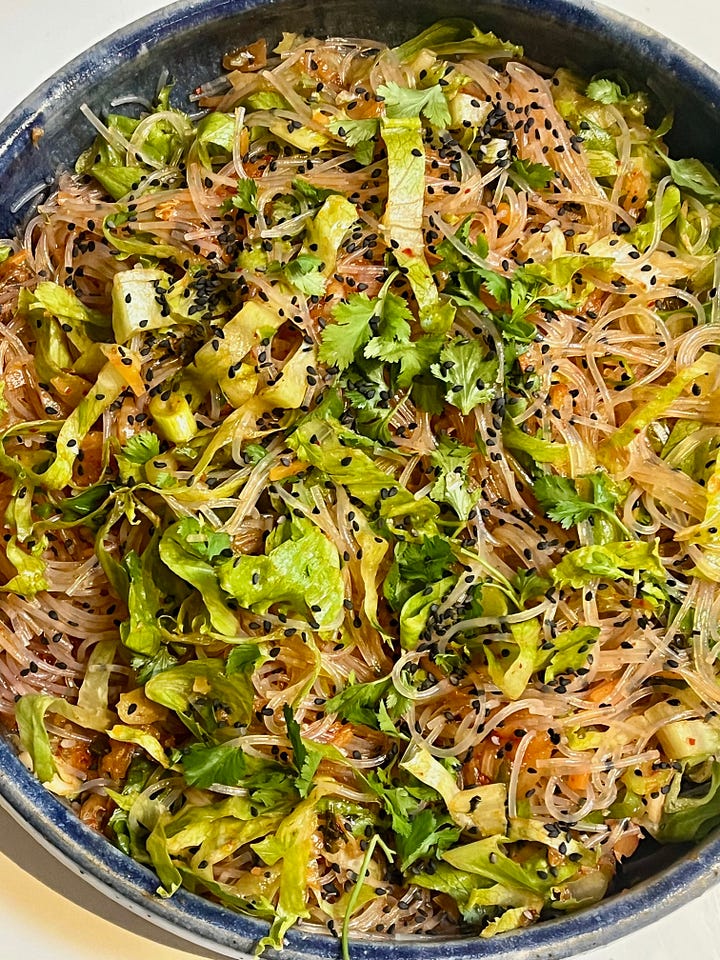
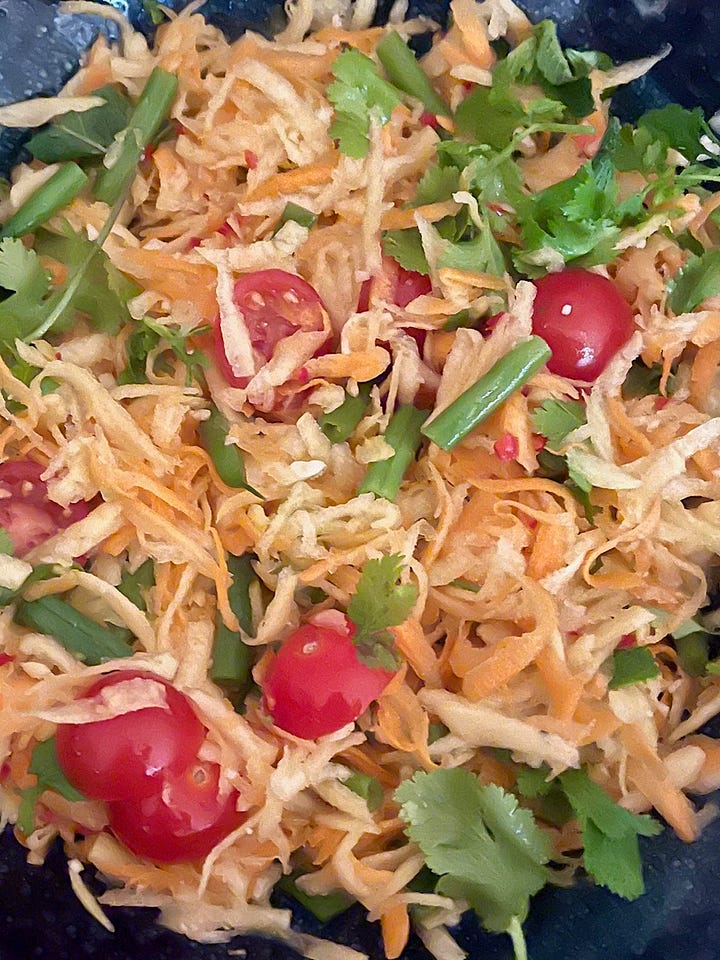
I did tell you a couple of weeks ago that I would be talking more and more about how indispensible I find pressure cookers in the summer months, this post is definitely making good on that threat! More cookery books coming up (a bumper issue featuring several) and a few spotlights on specific ingredients too. If you have enjoyed this one, please click through on the heart to help its visibility. And please do restack or share with anyone who you think may find it useful. Thank you!

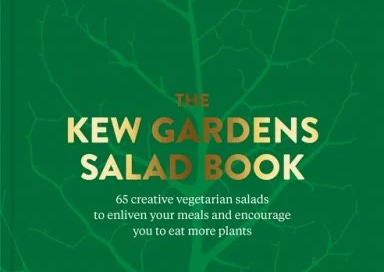




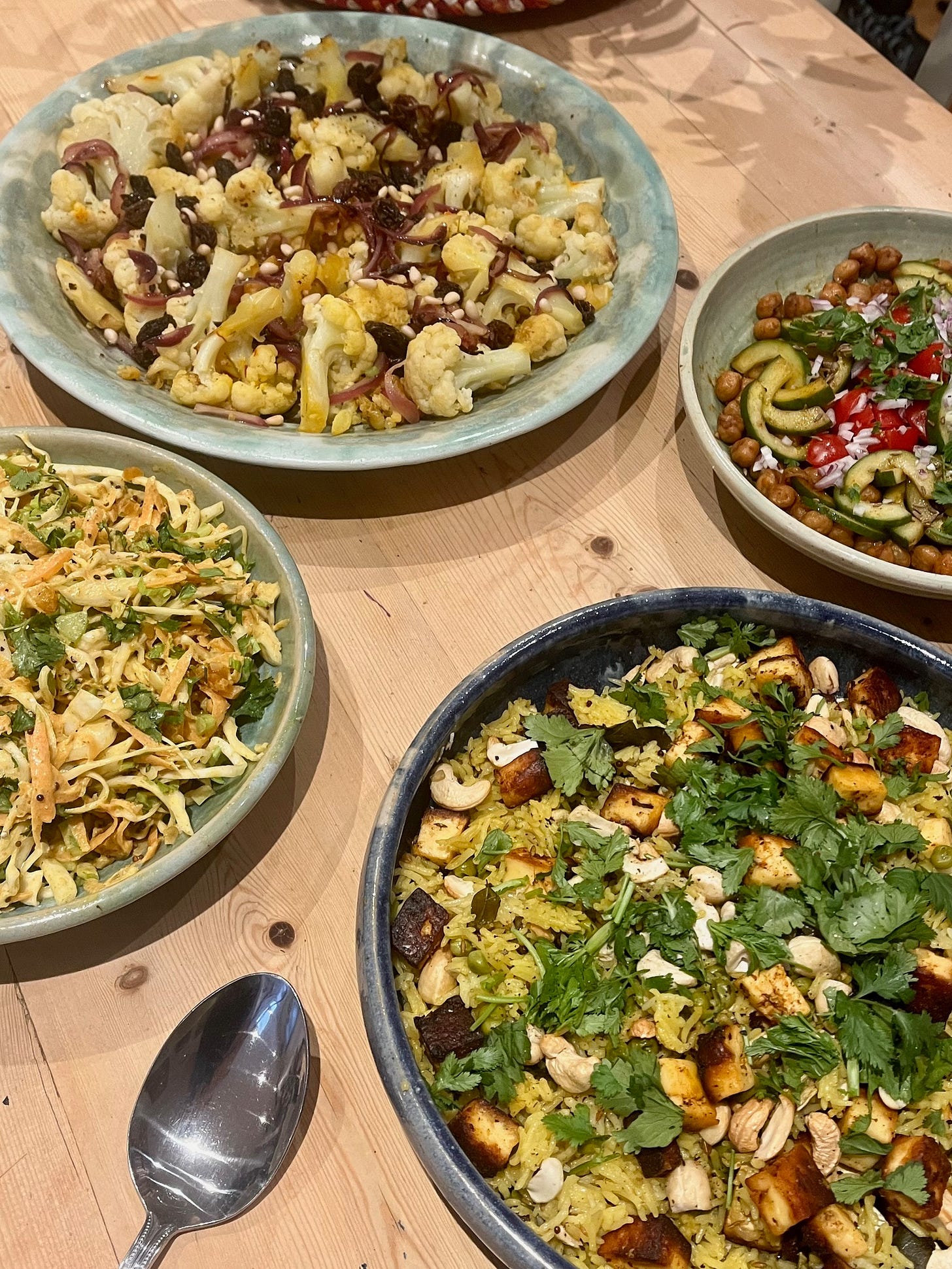
Jenny is always brilliant isn't she - can't wait to dive into this too.
Thanks Catherine for the inspiration!